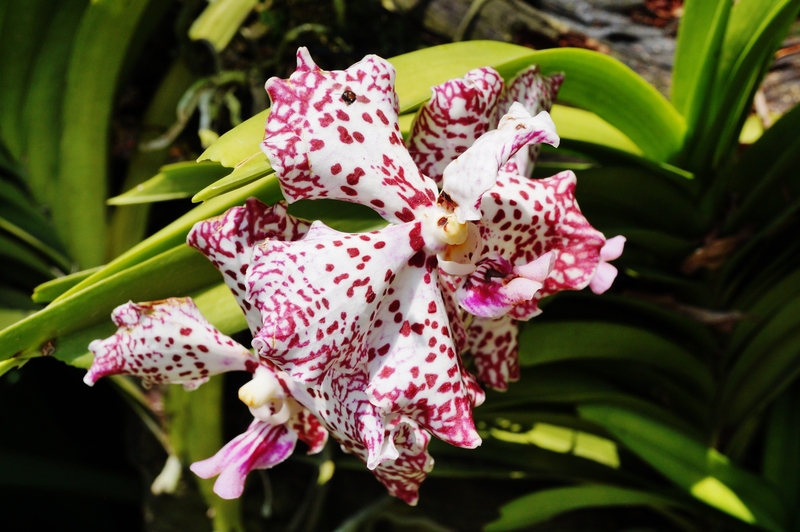Lawn Survival Guide--Avoid Drought Damage During the Scorching Summer Months
The hot weather months can be brutal for homeowners striving to maintain a vibrant, green lawn. The relentless sun, soaring temperatures, and unrelenting drought conditions conspire to turn a lush oasis into a patchwork of brown, lifeless turf. However, with the right strategies and a proactive approach, you can ensure your yard thrives, even when the mercury climbs. This Lawn Survival Guide offers expert advice, practical tips, and proven techniques to avoid drought damage and protect your grass in the hottest parts of the year.
Understanding Drought Stress and Its Effects on Lawns
Before crafting your summer lawn care routine, it's essential to recognize how drought impacts different types of lawns. Drought stress happens when heat and lack of rainfall rob your grass of the moisture it needs to photosynthesize, grow, and recover from wear. In severe cases, grass can become dormant, thin out, or die completely. Even mild drought can cause discoloration, weakened roots, and make your yard more susceptible to weeds and pests.
Why Protecting Your Lawn in Summer Matters
- Curb Appeal: Summer is when people spend the most time outdoors, so a healthy, green lawn keeps your property looking its best.
- Long-Term Health: Persistent drought damage can create bare patches, making room for weeds and disease.
- Environmental Benefits: Lawns help lower air temperatures, reduce dust, and absorb rainfall, minimizing runoff and soil erosion.

Choosing the Right Grass Types for Drought Resistance
Not all grasses are created equal when it comes to surviving drought. Selecting the best lawn grass for your local climate is the first step to avoiding drought damage during scorching summer months.
Top Drought-Resistant Lawns
- Bermuda Grass: Renowned for its deep roots and high heat tolerance.
- Zoysia Grass: Thrives in both sun and partial shade, requiring less water than cool-season varieties.
- Buffalo Grass: Ideal for dry, hot climates due to its exceptional drought survival ability.
- Fescue: Certain varieties like tall fescue have deep roots that help them weather dry spells.
- St. Augustine Grass:Works well in warm coastal regions and tolerates drought with proper care.
Tip: Consult with a local garden center or turf specialist to determine the most suitable drought-resistant grass species for your region.
Smart Watering Practices to Prevent Drought Damage
Water is your lawn's lifeline during hot, dry months--but efficient watering is about more than simply turning on the sprinkler. Overwatering wastes resources and encourages shallow rooting, while underwatering leads to stress. Mastering proper watering techniques is the backbone of effective summer lawn care.
1. Water Deeply and Infrequently
- Target the Root Zone: Water should penetrate at least 6 inches deep to encourage strong, drought-resistant roots.
- Frequency: Most lawns need about 1 to 1.5 inches of water per week. Split this into two or three sessions, rather than light, shallow watering every day.
- Test with a Screwdriver: After watering, push a screwdriver into the soil. If it penetrates easily, you've watered enough.
2. Water in the Early Morning
- Water between 4 a.m. and 9 a.m. when evaporation is minimal and winds are calm.
- Evening watering increases humidity overnight and can foster fungal diseases.
3. Use the Right Irrigation Tools
- Sprinklers: Oscillating or rotary heads distribute water more evenly.
- Soaker Hoses: Deliver slow, steady moisture directly to the soil.
- Smart Timers: Automate watering schedules and pause for rain events, conserving water.
*Conservation Tip: Adjust your irrigation based on rainfall, temperature, and humidity, avoiding unnecessary waste and meeting your lawn's actual needs.
Mowing Techniques to Help Your Lawn Survive Drought
Mowing is more than just an aesthetic chore during summer. Proper mowing techniques can make a vital difference in your lawn's ability to withstand and recover from drought.
How to Mow for Drought Resistance
- Raise the Blades: Set your mower to the highest recommended setting for your grass type, typically 2.5-4 inches. Taller grass shades the soil, reducing water loss and encouraging deeper roots.
- Never Remove More Than One-Third: Cutting more than a third of your grass blade at once stresses the plant and exposes the soil to evaporation.
- Keep Blades Sharp: Dull blades tear grass, making it more susceptible to disease.
- Leave Clippings: "Grasscycling" returns essential moisture and nutrients to the soil, further helping your lawn endure summer heat and drought.
Soil Health--The Unsung Hero in Lawn Survival
A healthy lawn starts below the surface. Good soil structure retains moisture, stores nutrients, and encourages roots to grow deep. If your soil is compacted, sandy, or low in organic matter, even the most drought-resistant grass will struggle.
Steps to Improve Soil for Drought Survival
- Conduct a Soil Test: This helps you understand pH, nutrient levels, and the presence of organic matter.
- Aerate Your Lawn: Use a core aerator annually to relieve compaction and enable deeper water penetration.
- Add Organic Material: Topdressing with compost or peat moss increases the water-holding capacity and fertility of your soil.
- Mulch Around Trees and Flowerbeds: Mulching not only conserves moisture in garden beds but also reduces runoff and evaporation from the edges of your lawn.
*Pro Tip: Healthy soil is nature's insurance policy against summer drought--invest in improving it year-round for the best long-term results.
Fertilization Strategies for Hot, Dry Weather
Fertilizer can give your lawn a much-needed boost, but timing and type are everything. Over-fertilizing or applying the wrong formula in hot weather can scorch your grass and worsen drought stress.
How to Fertilize Lawns During Summer Drought
- Choose Slow-Release Formulas: They provide steady nutrition over time, reducing stress and the risk of burning.
- Apply Lightly: If fertilizing is needed, use a half-rate or choose organic options that feed continually as they break down.
- Avoid High-Nitrogen Fertilizers: These can overstimulate growth, making your lawn push new blades it cannot maintain during water shortages.
- Always Water After Applying Fertilizer: This prevents chemical burn and helps nutrients reach the root zone.
Note: Most lawns do best with their main fertilization in spring and fall. During peak summer, focus on water and soil health instead.
Combating Summer Weeds and Pests Without Harming Your Lawn
Drought-weakened lawns are magnets for weeds and insects, which compete for the same limited resources. However, chemical weed killers and pesticides can further harm stressed grass. It's important to take a holistic, preventive approach during the darkest days of summer.
Preventive Tips:
- Healthy Lawns Outcompete Weeds: Follow best watering and mowing practices to thicken your sod and crowd out invaders.
- Spot-Treat If Necessary: For isolated outbreaks, use selective products and always follow label instructions. Hand-pulling is safest during drought.
- Encourage Beneficial Insects: Ladybugs, nematodes, and birds will help control pests naturally.
Smart Lawn Alternatives for Extreme Drought Regions
If you live in an area where drought is frequent or water restrictions are strict, consider "xeriscaping" or mixing lawn alternatives into your yard.
- Native Grasses: Adapted to local drought cycles, often requiring much less supplemental water.
- Groundcovers & Hardy Perennials: Like creeping thyme, sedum, or clover, which need less water and maintenance.
- Artificial Turf: A no-water option for areas where living grass just won't survive.
Xeriscaping isn't just practical--it can be stunning and add value to your property!
Signs Your Lawn is Suffering from Drought--and How to Respond
- Discoloration: Grass turns blue-gray, silver, or brown and doesn't bounce back when walked on.
- Slow Growth: Blades stay short or thin even after mowing and watering.
- Curling or Wilting: Grass blades fold inward to conserve moisture.
- Footprints Remain Visible: Grass doesn't spring back after walking across the lawn.
When you spot these signs, act fast: Boost watering (within local regulations), avoid heavy foot traffic, and don't mow until the grass begins to recover. Don't fertilize or use weed killers until your grass regains color and vigor.

Frequently Asked Questions About Summer Lawn Survival
Q: Should I let my lawn go dormant during drought?
A: Dormancy is a natural survival mechanism. Most established lawns can survive several weeks in a dormant state if a minimum of 1/4 inch of water every 3-4 weeks is provided. However, repeated dormancy can permanently thin your lawn over time.
Q: Will brown grass recover after summer drought?
A: If the turf is only dormant and crowns are alive, your lawn will likely green up after cooler, wetter weather returns. Dead turf (if you see brittle, straw-like crowns) will need reseeding or overseeding in autumn.
Q: Is it okay to mow during a drought?
A: Minimize mowing as much as possible. Mow only when absolutely necessary and always at the highest setting, leaving as much leaf blade as possible.
Q: How can I help my lawn recover after a severe summer drought?
Core aerate, dethatch as needed, overseed with the right seed mix, and apply compost. Begin a regular watering schedule and fertilize lightly in early fall. Patience is key--full recovery may take several months.
Final Thoughts: Thriving Lawns Through Scorching Summers
With the right combination of drought-tolerant grass selection, smart watering, mindful mowing, and healthy soil management, your lawn can weather even the harshest heatwaves. Preparation and consistency are the keys to not just surviving, but thriving, during summer's worst. Remember, every small step--from adjusting mower height to mulching beds--adds up to significant gains when it comes to your lawn's health and beauty.
Want more expert advice for your lawn's survival during the scorching summer months? Stay tuned for more tips, seasonal checklists, and guides optimized for your region's climate!